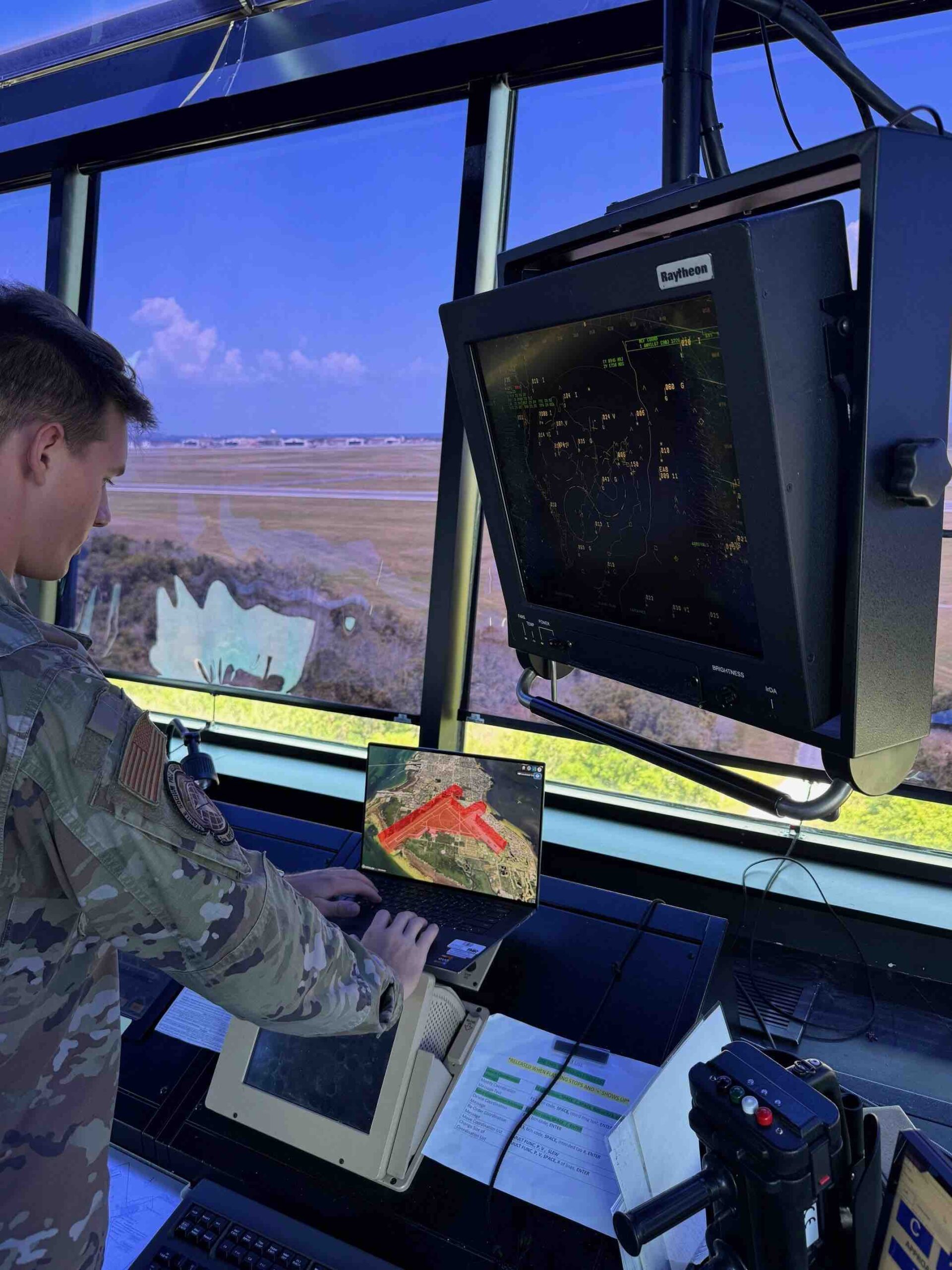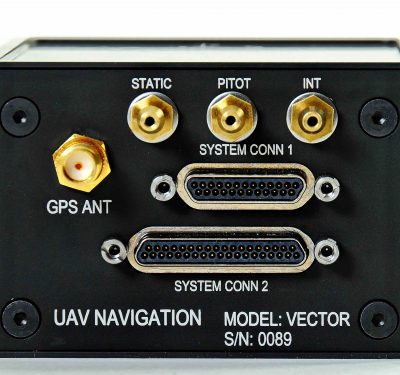The Air Mobility Command and the Air Force Research Laboratory have launched the CLUE UAS Traffic Management system at MacDill Air Force Base, with further implementations on the horizon.

Air Mobility Command (AMC), in collaboration with the Air Force Research Laboratory (AFRL), Information Directorate, has launched an operational assessment of the AFRL Collaborative Low-Altitude Unmanned Aircraft System Integration Effort (CLUE), Unmanned Aircraft Systems Traffic Management (UTM) system at MacDill Air Force Base in Florida. With this operational assessment, MacDill Air Force Base is the first Department of the Air Force (DAF) installation to use UTM capabilities within controlled airspace assigned to Department of Defense air traffic controllers. This ensures the safe operations of unmanned aerial vehicles (UAS), alongside manned air operations, enhancing integrated operational safety in a mixed airspace.
CLUE UTM is sensor-agnostic and capable of integrating with various sensors and systems developed to detect, track and identify UAS. At the base, this includes the Information Directorate Counter UAS systems, which are also under operational assessment.
According to James Layton, MacDill Air Force Base chief of plans and programs, the demand for the utility of drones continues to accelerate, “equipping airspace managers and UAS operators with a 3D operational viewing capability and additional features designed to reduce lengthy, manual and advanced planning procedures, will be critical to achieving real-time flight planning and mission execution.”
As part of the assessment at MacDill Air Force Base, UAS operators use CLUE to ask for permission to fly drones. The tower at the base either approves or denies the request. Once approved, the operators can fly their drones within the allowed area. CLUE gives them information about the airspace and the situation through a control interface called SAFIRE-X. This helps them keep track of active drone flights and warns them if the drones go beyond the approved conditions.
Origins
The CLUE program was initiated in 2016 at AFRL’s Information Directorate in Rome, New York. The goals of the program include preparing the Air Force and Department of Defense to use UAS on their installations through Security Forces, airfield management and civil engineering. The CLUE UTM provides air domain awareness, situational awareness and UTM operational capabilities for UAS operators, air traffic control personnel, Security Forces and other stakeholders.
AFRL brought CLUE to the MacDill base in February 2022 to demonstrate its capabilities to personnel involved in UAS operations, with particular interest for air traffic control and Security Forces. Initial testing focused on evaluating CLUE UTM capabilities for airspace deconfliction, communication and security to enable UAS operations beyond the visual line of sight.
Originally designed to be a DOD/Federal UAS service supplier, CLUE has been developed for two years at MacDill Air Force Base to help air traffic controllers by giving them a three-dimensional view to improve their existing procedures and allow automatic flight permission for UAS operators.
“The Collaborative Low-altitude UAS Integration Effort, or CLUE, program has reached a significant milestone by enhancing our air traffic controllers’ abilities to ensure safe integration of sUAS within DOD controlled airspace by providing Air Domain and Situational Awareness,” said Master Sgt. Robert Minor, chief controller at MacDill Tower.
In May 2024, CLUE UTM began formal operational feasibility assessment activities, accessible by the Air Traffic Control Tower, the Base Defense Operations Center and Airfield Management.
“The MacDill Air Traffic Control Tower and Base Defense Operations Center are first in the Air Force to operationally assess UTM capabilities,” said Phil Zaleski, AFRL CLUE program manager and Information Convergence branch chief. “This milestone is recognized by the Office of the Undersecretary of Defense for Acquisition and Sustainment, or OUSD A&S, the Office of Primary Responsibility, or OPR, for UTM within the DOD.”

CLUE’s Evolution
Phil Zaleski, AFRL CLUE program manager, provided Inside Unmanned Systems with in-depth background and details on the program.
IUS: Can you provide details on the maturity level of the CLUE UTM system as it stands today?
Zaleski: CLUE is built to the current UTM standards that have been adopted by the various standards bodies (i.e., ASTM, ICAO, IETF, etc.). However, no formal FAA UTM certification standard exists to date. As the CLUE UTM system operates the NY UAS Test Site and is in operational feasibility testing at MacDill, it’s safe to say that CLUE is presently at a TRL 7/8.
IUS: What key milestones have been achieved that demonstrate the system’s readiness for broader implementation?
Zaleski: In the past 2 years at MacDill AFB, AFRL spent a significant amount of time showcasing CLUE UTM and how these capabilities could assist in providing greater ADA and SA within their controlled airspace. In addition, the UTM operational capabilities would allow UAS operators the ability to better manage and coordinate their UAS operations with the ATC tower. A huge milestone was to get all parties involved to approve CLUE access in places like the ATC tower and BDOC. This required approval from AMC, AFFSA, 6OSS, and 6SFS. This advocacy and the operational requirements gained from CLUE UTM testing at MacDill AFB demonstrates readiness for broader implementation.
IUS: How has the operational feasibility assessment at MacDill Air Force Base confirmed the system’s readiness for wider deployment?
Zaleski: CLUE UTM is presently under operational feasibility testing at MacDill AFB. Over the course of the next 6-12 months, the operational feedback received will help the AFRL CLUE team to address the needs and requirements that all users will benefit from, thereby increasing readiness for wider deployment. We’re also working closely with OUSD A&S as they are the OPR for UTM within the DoD.
IUS: What are the main indicators of the CLUE UTM system’s operational readiness, especially in terms of safety and efficiency?
Zaleski: These indicators will come from AMC and AFFSA, with the most important indicator being an approved ATO.
IUS: Are there any specific timelines or milestones set for integrating the CLUE UTM system into civilian airspace management for AAM?
Zaleski: While CLUE UTM will be capable of supporting both UTM and AAM in the near future, CLUE is an Air Force program and is focused on the needs of the DoD and Federal Government. However, CLUE UTM is designed to interface with commercial UTM/AAM supporting civilian airspace management.
IUS: What were the main challenges encountered during the development and testing phases of the CLUE UTM system, and how were they overcome?
Zaleski: The two biggest challenges have been the lack of FAA certification standards for UTM and access to UAS sensing systems. The first has been partially overcome by engaging frequently with the FAA, to include being part of the various FAA UTM test events held at the NY UAS Test Site. In addition, the team’s involvement in ASTM, ICAO, and IETF have helped shape UTM while positioning for DoD needs. The latter has been overcome by ensuring that CLUE UTM is sensor-agnostic and performing our development and testing at the NY UAS Test Site and MacDill AFB, where a significant number of sensors are present.
IUS: How has the system’s development addressed the unique challenges of integrating unmanned aircraft into controlled airspace?
Zaleski: Incorporating UTM into controlled airspace isn’t ripe with challenges. The main goal of CLUE UTM was to streamline the coordination between UAS operators and ATC, ensuring that this new capability not adversely impact their day-to-day operations, while providing all with better ADA and SA during UAS flight operations within controlled airspace.
IUS: What feedback have you received from these stakeholders regarding the system’s maturity and readiness for broader use?
Zaleski: Because the operational feasibility assessment just began in May 2024, feedback has been limited. However, in the ~2 years that CLUE UTM has been at MacDill AFB prior, we received feedback from both SFS and OSS that better positions CLUE UTM for broader use within the AF community. One such example is the ability to create automatic approval zones where UAS operators can get automatic approval for operational intents (i.e., flight operation volumes) in areas that have already been approved for use by ATC without the need for ATC operator approval.
IUS: What measures have been taken to ensure that personnel at MacDill Air Force Base are adequately trained to use the CLUE UTM system?
Zalesky: The AFRL CLUE UTM team are working closely with AMC, 6OSS and 6SFS operators to translate CLUE UTM training into standardized Air Force operator training. This process will be iterative as the assessment continues. A Job Qualification Survey has also been drafted and is under review.
IUS: How will the training and adoption processes be scaled for other installations and civilian applications?
Zalesky: The AFRL CLUE UTM team will work closely with AMC, 6OSS, 6SFS, AFFSA and the Career Field Managers to ensure that the CLUE UTM training is scaled appropriately. Civilian training already exists.
IUS: How has the adoption process been managed at MacDill Air Force Base, and what lessons have been learned that can be applied to other installations?
Zalesky: The operational feasibility assessment initiated in May 2024, but in the ~2 years prior, close coordination with AMC, 6OSS, 6SFS, AFFSA, to include a number of demonstrations, both live and simulated, greatly helped in gaining local advocacy for operational feasibility assessment. OUSD A&S has been involved in many of the CLUE UTM demonstrations and has provided useful feedback.
IUS: What strategies are in place to encourage and facilitate the adoption of the CLUE UTM system by other military and civilian air traffic control centers?
Zalesky: The appropriate strategy is to identify a Program Office within the Air Force and DoD for UTM, with the assistance of OUSD A&S. Until then, operational need exists and AFRL is providing access to CLUE UTM capabilities to a short list of users. At MacDill, it’s expected that as the operational feasibility assessment progresses, AMC will work to develop an ATO, which would lead to potential adoption at other AMC installations.
IUS: What performance metrics are being used to evaluate the effectiveness of the CLUE UTM system?
Zalesky: There are many, but most importantly are UAS tracking accuracy, speed and effectiveness of operational intent approvals, accuracy of Air Domain Awareness, effective Situational Awareness and alerting, and the ability to provide safe and effective VLOS and BVLOS UAS operations. At this time, we’re compiling this data as the operational feasibility assessment was initiated a few months ago.

Flight Operations Using CLUE UTM and Blue UAS Platforms at FAA Test Site
In June, the Defense Innovation Unit (DIU), in partnership with OUSD-A&S, AFRL, AgEagle, Auterion GS, AX Enterprize, Skydio, and Somewear Labs, conducted flight operations while enabling critical data sharing via a multi-network device. The three-day event at the 300-acre NY UAS Test Site evaluated the integration of Blue UAS platforms with the CLUE UTM system.
“As the usage of small UAS aiding warfighting functions continues to expand, it is becoming increasingly important to confidently distinguish between those UAS trusted to be used for DoD missions and those that just happen to be in our airspace,” said David Michelson, Autonomy Portfolio Director at DIU.
Demonstration partners and products included AgEagle’s eBee VISION and Skydio’s X2D, executing air missions while supplying telemetry data back to the CLUE UTM system over a Somewear Node multi-network device. The aircraft were controlled by UXV Technologies’ Soldier Robotic Controller (SRoC) ground control stations (GCS), a handheld device designed to operate and control unmanned vehicles, and QGC-Gov, a DoD compliant software solution. This configuration combined mesh radios and satellite technology, supplying accurate real time information to the mission command center.
Each GCS was connected via USB to a Somewear Node, with an additional range extending relay node carried by a Freefly Systems Astro UAV, all forming a mesh to a cellular device and back to the enterprise network for parsing and ingestion to the CLUE UTM software. The Somewear Node and associated app were recently added to the Blue UAS Framework list of approved critical components.
By combining the telemetry data provided by the UAS with other data feeds, such as ADS-B, counter-UAS and radar, the CLUE system provided a visual situational awareness tool capable of assisting air traffic deconfliction, flight area allocation, FAA compliance and identification of other UASs.






